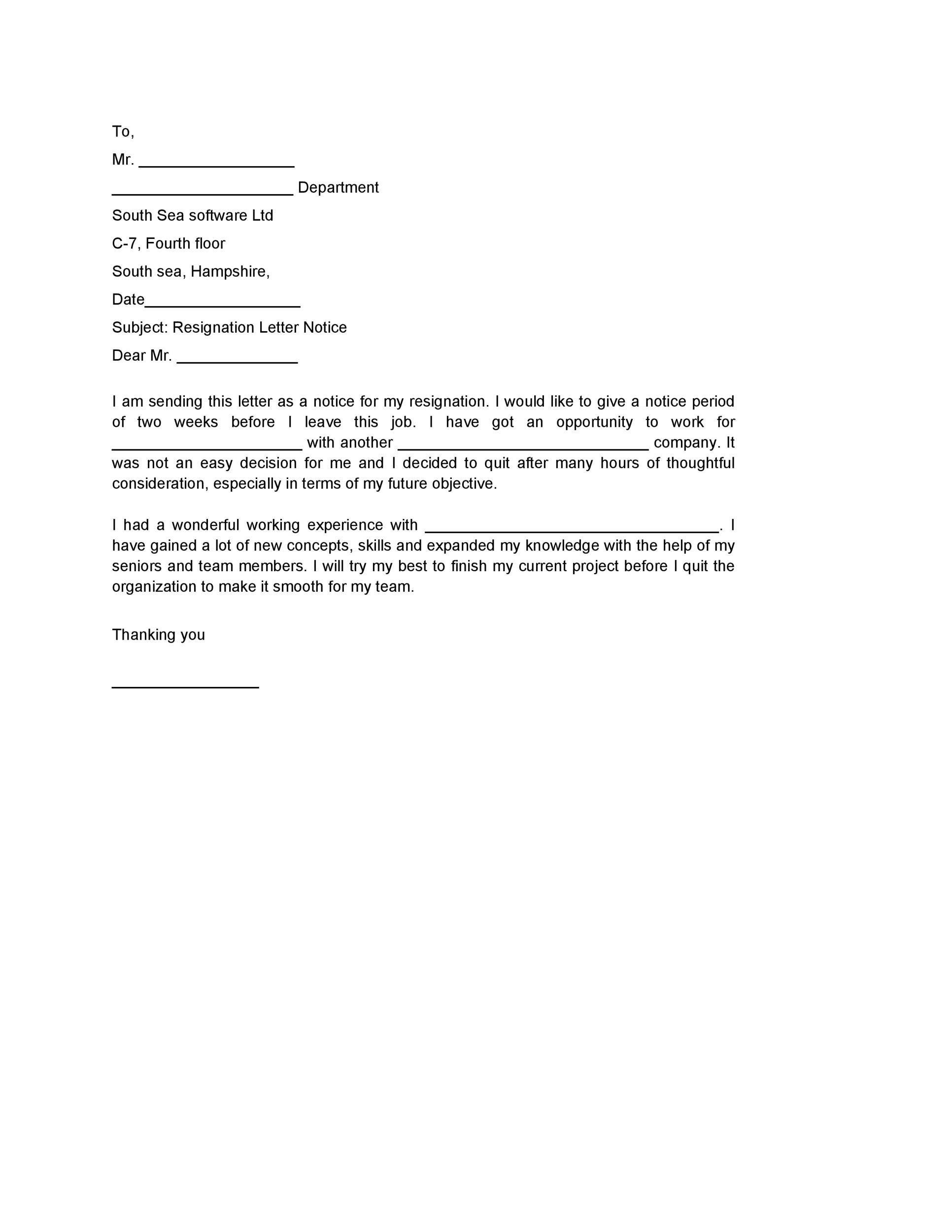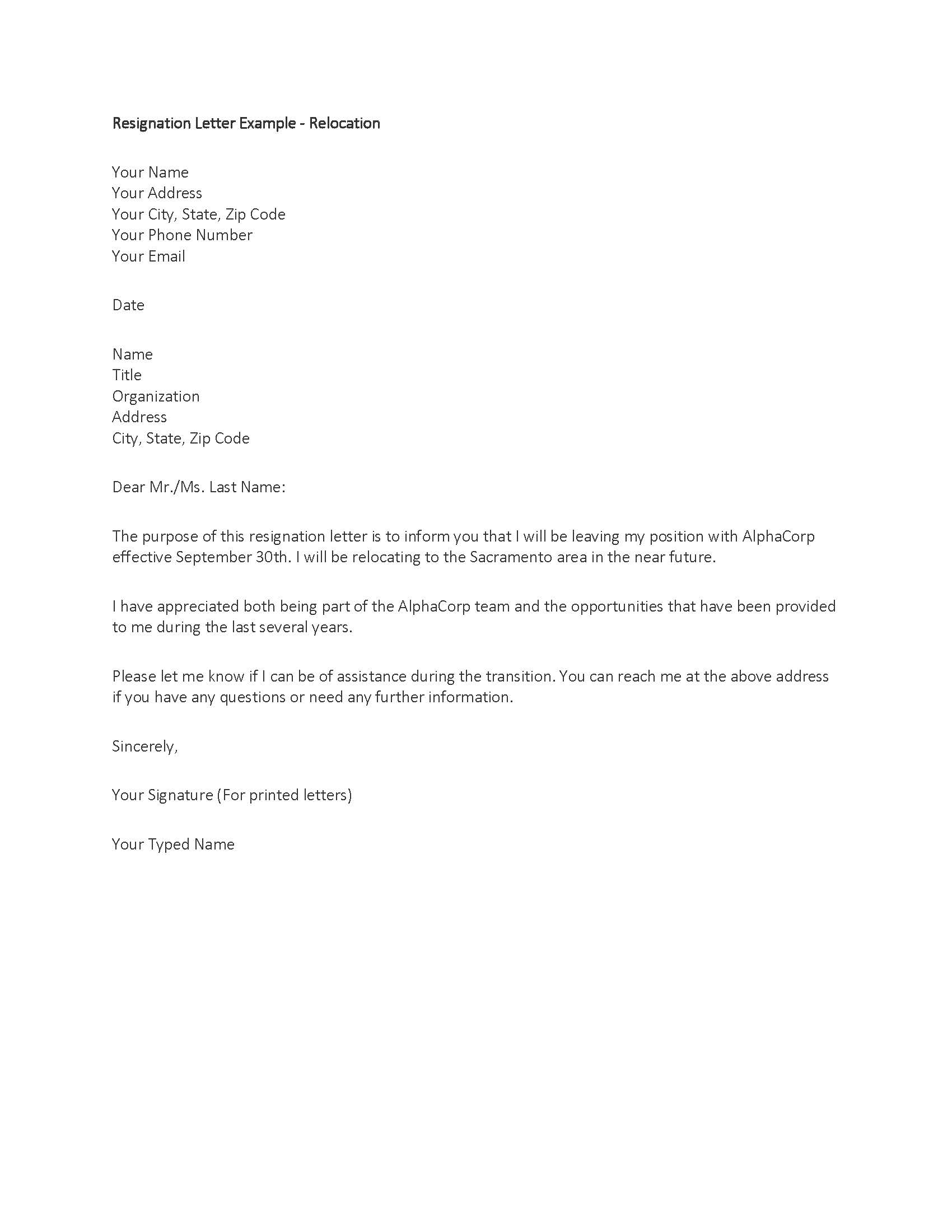

I am thankful for the support and guidance that you and my colleagues have provided me with throughout my tenure. The experience I gained and the skills I developed while working here have been invaluable. I want to express my gratitude for the opportunities you have provided me with during my time at. I wanted to let you know that I will be resigning from my position as at as of. I will do my best to ensure that all of my projects are completed, and that my responsibilities are passed on to my successor in an organized manner. Please let me know if there is anything I can do during my final two weeks to help make the transition as smooth as possible. I am grateful for the support and guidance you have provided me with throughout my tenure. I want to thank you for the opportunity to work at and for the knowledge and skills that I have acquired during my time here. My last day of work will be, providing you with the standard two weeks’ notice. I am writing to formally submit my resignation from my position as at. Remember to be professional, honest, and respectful throughout the process, and you’ll be well on your way to your next opportunity. By following these steps, you can ensure a smooth transition and leave on a positive note. In conclusion, putting in your two weeks’ notice is an important part of leaving a job. You may also want to consider leaving a small gift or note for your boss as a token of appreciation. You can send an email or message to your colleagues thanking them for the opportunity to work with them, and letting them know how they can stay in touch. On your last day, it’s important to say goodbye to your coworkers and leave on a positive note.

You should also consider writing up a transition plan to help your replacement get up to speed quickly.

This includes completing any outstanding projects, passing on information to your replacement, and cleaning up your workspace. Step 6: Wrap Up Your Workĭuring your final two weeks, it’s important to wrap up your work as much as possible. Showing that you’re willing to help will leave a positive impression on your employer and coworkers. This could include training your replacement, creating documentation to help with the transition, or simply being available to answer questions. To make the transition as smooth as possible, it’s a good idea to offer to help your employer during your final two weeks. Step 5: Offer to Help with the Transition You can find templates online if you need help getting started.
#Quit job letter professional#
This should be a brief and professional letter that outlines your intention to resign, your last day of work, and a thank you to your employer for the opportunity to work for the company. Step 4: Provide a Written Resignation LetterĪfter you’ve had the conversation with your boss, it’s important to provide a written resignation letter. It’s important to remain positive and avoid saying anything negative about the company or your coworkers. Be prepared to answer these questions honestly and professionally. Your boss will likely have questions about your departure, such as when your last day will be, who will take over your responsibilities, and whether you have any concerns about the transition. You can start the conversation by saying something like, “I wanted to schedule a meeting with you to discuss my resignation.” Your boss will likely ask why you’re leaving, so be prepared to give a brief and honest explanation. This should be done in person, as it shows respect and professionalism.

Once you have a plan, it’s time to schedule a meeting with your boss. Step 2: Schedule a Meeting with Your Boss You should also think about how you will tell your coworkers, and what your next steps will be after leaving the company. Consider the logistics of leaving, such as when your last day will be, how much notice you need to give, and what you need to do to wrap up your work. Step 1: Make a Planīefore you talk to your boss, you need to have a plan for your departure. But how do you go about putting in your two weeks’ notice? Follow these steps for a smooth transition. Giving your employer two weeks’ notice is the standard practice, as it provides them with enough time to find a replacement and for you to wrap up your responsibilities. When it’s time to leave your job, it’s important to do so professionally and with as little disruption as possible.


 0 kommentar(er)
0 kommentar(er)
